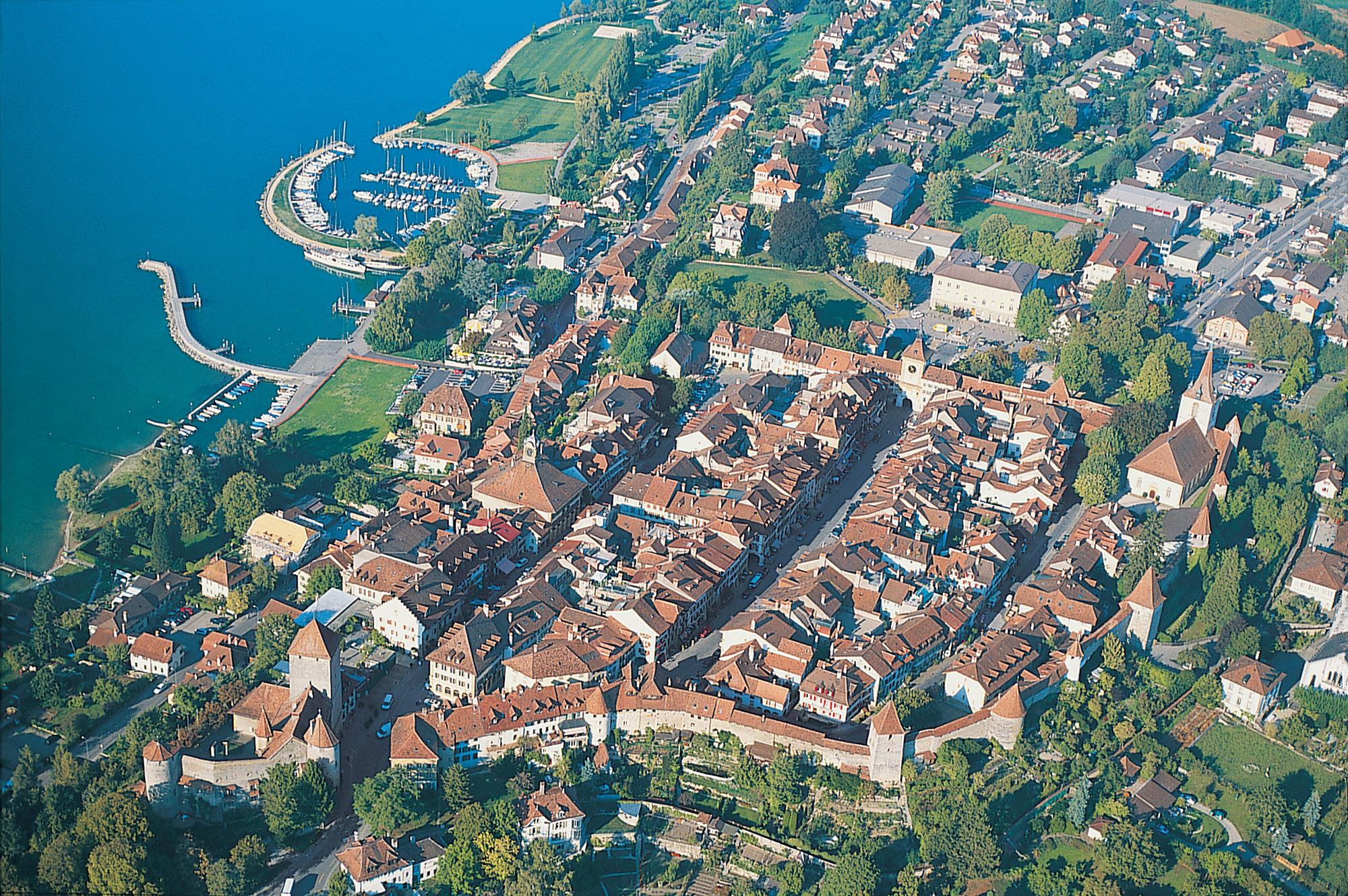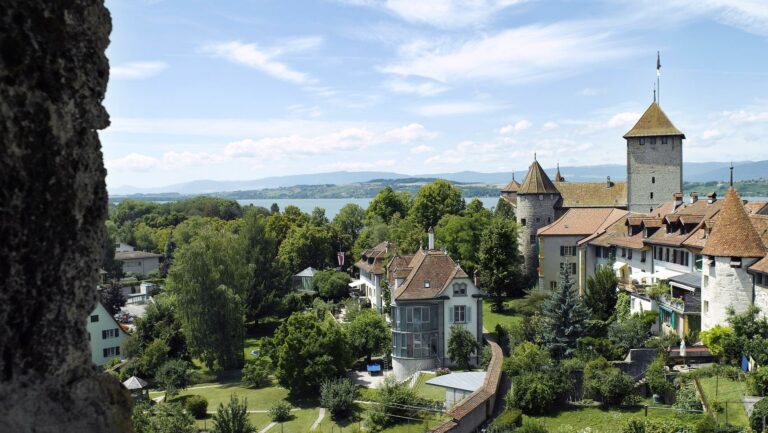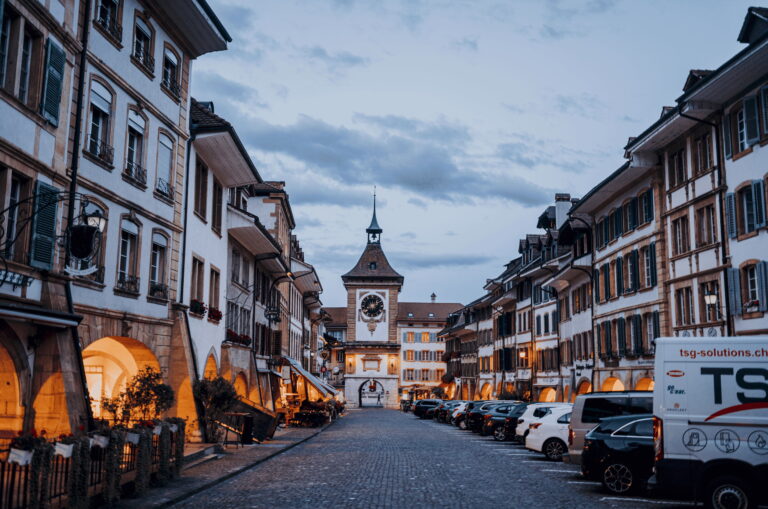The history of a small medieval town.
Murten is situated on the north-south route (E4 & A1) between Berne and Lausanne and is the capital of the Lake District of the canton of Fribourg. This small medieval town lies in the Swiss «Midlands» on the edge of the Great Marsh, on a gentle hill (450 metres above sea level) and on the shore of a lake named after the town. Numerous attractions from a significant past have been well preserved here, such as the castle, the ring wall, the street scene and the arcades. The majority of the 6'000 inhabitants (73%) are German-speaking, a minority (14%) consider French as their mother tongue.
Historical summary:
515, first mention of the existence of a defensive place called «Muratum». 1013, known as a fortress.
1159-1179 The town was founded by Duke Berchtold IV of Zaehringen as a western fortification. Duke Berchtold died in 1218. Murten was recognized as a “Free Imperial Town», by the German emperor Frederic II. 1255, Murten falls under the protection of Count Peter of Savoy. 1377, Count Amédée of Savoy confirms the privileges given earlier by Duke Berthold of Zaehringen. 1416, the last great fire: the town is destroyed and rebuilt in stone. 1475, the town proclaims its loyalty to Berne and Fribourg. 1476, Charles the Bold, Duke of Burgundy, besieges the town, but is defeated by the Swiss Army (celebration: 22nd June). From 1484 on, and for 300 years, Murten is ruled by the two states, Berne and Fribourg. 1798, the French invade the town. 1803, Napoleon gives the town of Murten to the canton of Fribourg.
Region Murtensee / Région Lac de Morat
Hauptgasse 27
3280 Murten


















